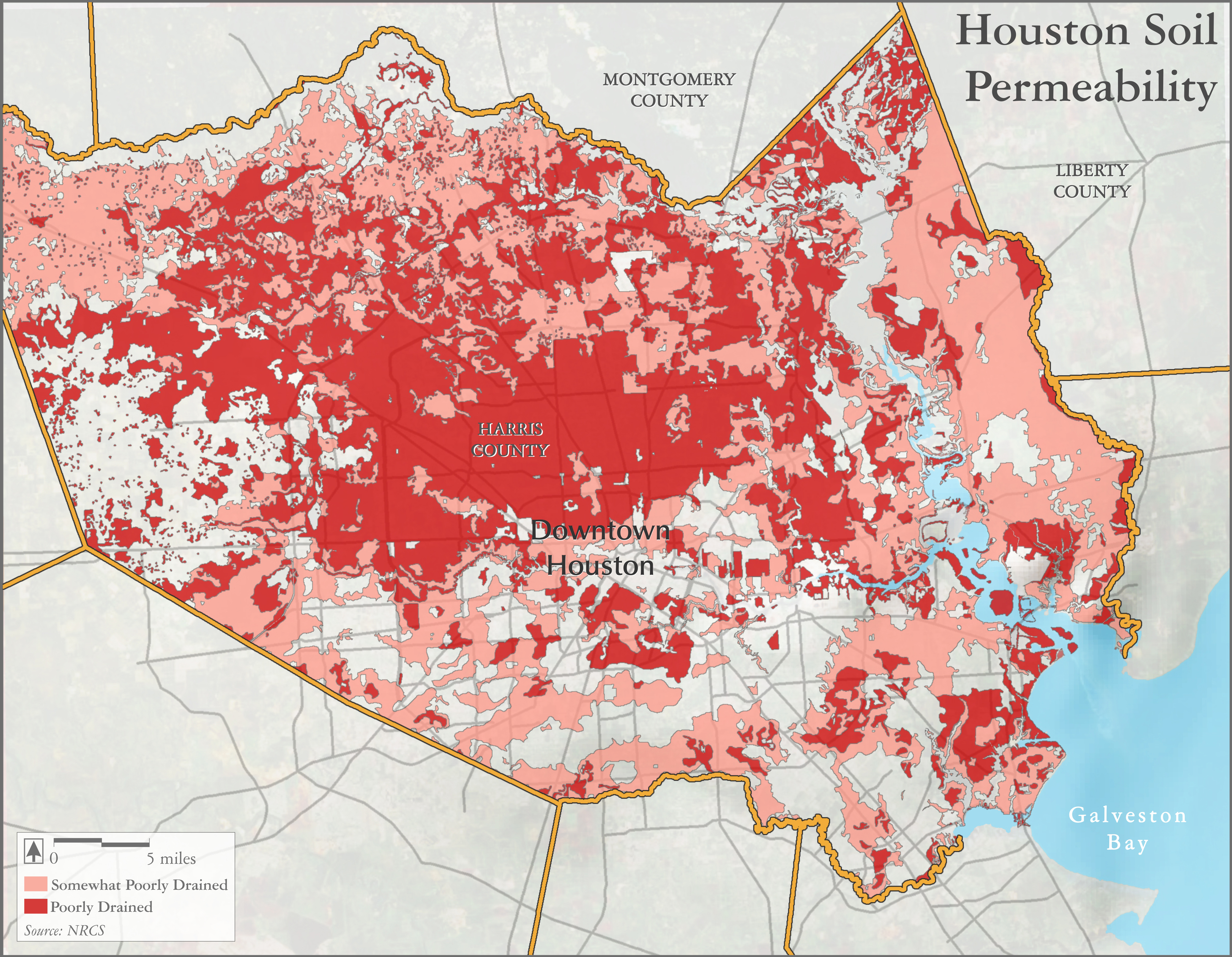
Soils and Flooding
Houston floods severely and often.
The high water in local bayous, and indeed in streets, cars, and homes, is due to many reasons, including the intensity of local rain events, the frequency of coastal storm surges, the extent of sprawl, and the flatness of the local terrain.
However, one other important cause of Houston floods always needs to be remembered: the region’s soils. While there is a wide variety of soil types in the area, including Bacliff clay, Bevil clay, Bissonnet loam, Boy loamy fine sand, Clodine fine sandy loam, Dylan clay, Hatliff-Pluck-Kian complex, Gessner fine sandy loam, Harris Clay, Lake Charles clay, and many others, many of the local soils have something in common.
When the city’s soils are sorted by how they drain (or don’t), it is clear that the majority of Houston’s soils is made up highly impermeable clay. Rainwater strikes it and does not soak in: it just runs off, and, often, floods. In this way, the city’s soils certainly hold some responsibility for the area’s frequent and serious flooding.
Sources:
Natural Resources Conservation Service. 1999. Soil Taxonomy: A Basic System of Soil Classification for Making and Interpreting Soil Surveys, Second Edition.
Natural Resources Conservation Service. 2003. SSURGO Template Database. https://gdg.sc.egov.usda.gov/ (Accessed December 2, 2016)
Natural Resources Conservation Service. 2016. Soil Survey Spatial and Tabular Data (SURGO 2.2). https://gdg.sc.egov.usda.gov/ (Accessed December 2, 2016).
